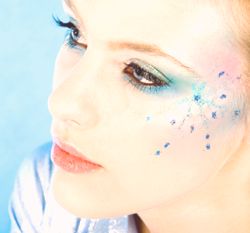
QUESTION: Please settle an argument I'm having with a friend about what makes
a person's skin turn yellow. She says it means liver disease. I say it means
jaundice. Who's right?
ANSWER: Actually, both of you are correct. "Jaundice" merely means that the
skin is tinted yellow. The color comes from certain pigments contained in the
bile, and it's a sure sign something has gone wrong.
disease affecting the liver, but can also be caused by problems in the
"biliary tree" (the tubes leading to and from the gall bladder).
There are some clues doctors use to tell the conditions apart. For one,
an individual with obstructive jaundice, caused by a blockage in the biliary
tree, usually notes the changed color of the skin before being aware of
feeling under the weather. In fact, jaundice patients often discover their
condition accidentally, when a friend or family member comments on the change
in their complexion. In contrast, patients suffering from hepatocellular
diseases (a fancy name for liver disease)--the most common variety is viral
hepatitis--usually complain early on of such concerns as weight loss, fever,
or a sensation of itching.
When a doctor suspects an obstruction in the biliary tree, a series of
noninvasive radiologic tests to discover the location of the blockage is
usually recommended. Ultrasonography can show dilated bile ducts; CT scans
are useful in providing more detailed data. For true liver disease, there are
a wide variety of blood and chemical tests to help determine the exact
diagnosis, and it sometimes take quite an effort before the exact cause of the
jaundice can be determined.
0 Comments:
Post a Comment